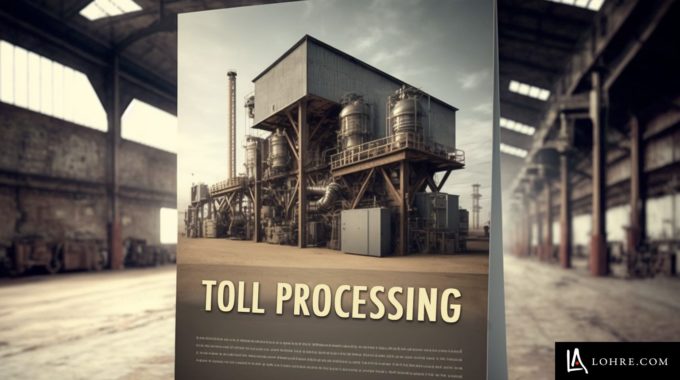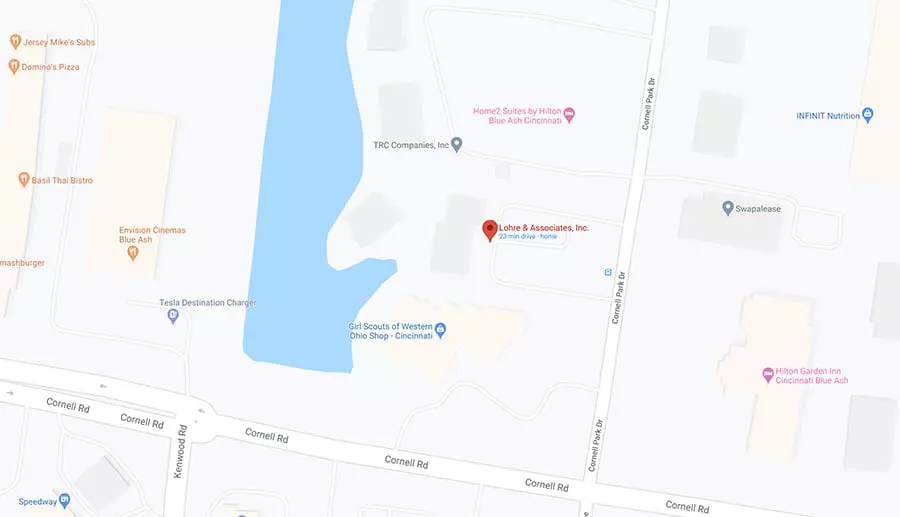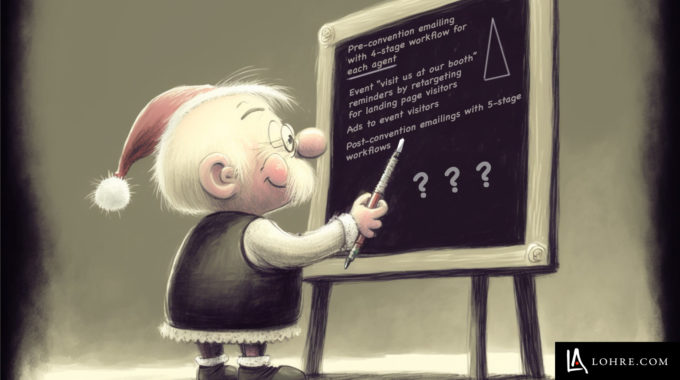Many companies have become concerned with website accessibility over recent years. Since 2018 the drive…

SMPS – CPSM Exam – Industrial Marketing Proposals
Great Proposals Match Your People’s Talents To The Client’s Needs
Recently I listened to the award story for a theatre. It told several stories about the different types of groups that went to the playhouse. The young girl going to the Nutcracker for the first time with her grandmother. The story of a young couple going to Romeo and Juliet. The older couple enjoying an evening together with friends. And the young professionals so anxious to see and be seen. They had the director crying. The patrons wide eyed about the world that could be created as a part of their legacy. They are now seeking more funds to realize their dream.
This is a true story. The work went to a firm that wasn’t known for their theatre work. Another secret ingredient was bringing in the best sound designer in the world. True Industrial Marketing Proposals follow this path.
Be sure to follow the instructions so you don’t get uninvited to the party. And be careful you don’t show your hand to your competitors. Many times subs will be included on several proposals, they aren’t your friends.
Case Study Activity
This Case Study Activity allows you to reflect on and apply the key concepts that you learned in this Domain to a real-world scenario. Each Domain includes a scenario about the same organization, Gilmore & Associates. The scenario is presented to you, followed by several questions. You can also elect to view the recommended solutions/ responses for each question posed, which are located on the next page. This case study can be studied in many ways:
• You can individually reflect on the questions after reading the scenario, and write your own notes/responses to each question. You can then check your ability to apply the key concepts against the recommended solutions/responses.
I have very little knowledge of these types of negotiations. I can imagine such things for my much larger clients but most of the time they didn’t work out so well. Buying $100,000 worth of equipment to enter a new market only to find that it wasn’t the performer you thought it was. The engineering world appears to be black and white but it isn’t.
• You can pull together a small group and use this scenario to drive a discussion around the challenge and to discuss solutions as a group.
• You can combine a selection of the case study activities (across the Domains) into a larger scenario-based activity as a part of a professional development event.
Gilmore & Associates, the mid-sized engineering firm you work for, has been presented with a game-changing opportunity. You’ve recently been leading the effort to transition your firm away from working primarily in the education sector, and towards healthcare projects that serve the growing retiree community in the area. One of the prospective clients that your team has been building a relationship with has just mentioned a new project that they will be embarking on in the upcoming year-a retirement community with a built-in rehabilitation facility that caters specifically to the needs of older adults.
This project is perfectly in line with your firm’s strategic objectives, and the CEO is excited to go after it. It doesn’t take long for your decision team to reach a “go” decision. Knowing about this project early on gives you plenty of time to develop a winning proposal.
1. Since your firm hasn’t worked on many healthcare projects before, you are considering forming a partnership with a more experienced firm to improve your chances of winning the project. What factors should you consider when evaluating a firm as a potential partner?
2. The client releases the RFP, and the convoluted structure of the document makes it difficult to parse out what, precisely, is being requested. How can you ensure that you fully comprehend and meet all of the proposal requirements?
3. What can you do to make your proposal stand out?
4. You are informed that your project team has made the short list. You and two other firms have been invited to present on how your design for the retirement facility will best meet the client’s needs. What can you do to prepare for the upcoming presentation and interview?
5. Your hard work has been rewarded-your firm won the project! How can you make the most of the debriefing session to help you relive this success in future proposals?
1. Since your firm hasn’t worked on many healthcare projects before, you are considering forming a partnership with a more experienced firm to improve your chances of winning the project. What factors should you consider when evaluating a firm as a potential partner?
• Compare the skills and expertise required by the client against your firm’s ability to provide them. Would a potential partner be able to fill in the gaps?
Most recently we have won work writing technical articles but the price points have been hard to make. These are very complicated mechanical engineering articles about electric motors and gearboxes. I wonder how or who I would partner with. I don’t like the typical response from writers, “That’s what I do, write about things I don’t know about.” Usually I’ll research the internet for everything publically shared and then distill it down to two or three thousand words. But even that put us upside down about 100% for the project.
• Evaluate the strength of your relationship with the client. Do you have ties with the decision makers in the client’s firm? Would your proposal benefit by partnering with a firm that knows the client better?
• Consider the culture of the firm that you’re thinking about teaming with. Is it compatible with your own firm’s culture, or will it require a major adjustment? Do your teams get along?
The tips about how to negociate things other than the price are good. Timing. Rights. What other things could I ask for. They have already given us a testimonial letter.
• Does the client have participation goals for SDBE firms?
2. The client releases the RFP, and the convoluted structure of the document makes it difficult to parse out what, precisely, is being requested. How can you ensure that you fully comprehend and meet all of the proposal requirements?
I’m thinking about doing the same thing with these Domains. Fo me, the real reason I’m studying is to learn how to grow my company. I’ve learned that you need to grow from your employees’ strengths. You need to match that with growing markets. Doesn’t sound too hard. The hard part is finding the right audience. You can’t by a list or do any kind of shotgun approach. Mailing to a list or even, like I do, go to trade shows to approach the right audience. Sometimes VP of sales is looking for a new agency at a show, they do have marketing on their mind. But the real way to market is to right a focused web site, like Myke Amend did for us, industrialwebdevelopment.com has brought us two new clients that are perfectly matched to our skills, and very profitable.
• Use a compliance matrix to deconstruct the RFP and reorganize it so that related information is grouped together.
• Develop questions and submit any requests for clarification to your point of contact in the client’s firm.
• Find out if the questions and answers will be posted publically for your competitors to see.
• Ask your BD team what they know about the client’s hot buttons. This information can be used to figure out their unstated requirements.
This happens if you have an inside champion. If you don’t, don’t even bother bidding.
• Create a detailed work plan, complete with a schedule for tracking proposal elements and assigning responsibilities, so that none of the proposal requirements are ignored.
3. What can you do to make your proposal stand out?
• Build your proposal around a unifying theme that highlights the differentiators that your firm has that will most benefit your client.
• Tell a story, through examples and statistics, of how your team has provided value for similar projects in the past. Use text and graphics to create an engaging narrative. For example, the ways in which your experience designing K-12 schools have prepared you for designing this similarly-sized retirement facility.
• Think about why each project team member was selected and highlight their expertise.
• Keep the focus on your client-how your firm will address their worries, hopes, and needs.
The last public works project I bid on, we lost. We did everything above but there was something we didn’t know. Something we weren’t told. The large web site project went to another firm and was typified by the computer programmers hanging out in the parking lot smoking cigarettes. I wish we could have had a debrief but it wasn’t offered. They did share a copy of the winning proposal but it didn’t uncover any clues. The importance of having an inside champion can’t be over stressed. I’m not sure how it all works, and not bitter about losing the work or wasting time but not knowing why they chose one firm over another is troublesome.
4. You are informed that your project team has made the short list. You and two other firms have been invited to present on how your design for the retirement facility will best meet the client’s needs. What can you do to prepare for the upcoming presentation and interview?
• Find out from your BD team what the client is looking for in the presentation. Identify and address their concerns with solutions that differentiate you from your competition.
• Visit the presentation space, if possible, or ask to see a picture of it so that you know what to expect on the day of the interview.
• Develop a storyboard to outline the presentation and ensure that all elements-salient points, graphics, narrative, etc.-flow together.
• Make sure that you have a contingency plan for anything that might go wrong, including technological difficulties.
• Rehearse the entire presentation at least three times, until all of your speakers can present their material conversationally and without notes.
5. Your hard work has been rewarded-your firm won the project! How can you make the most of the debriefing session to help you relive this success in future proposals?
8 Develop open-ended questions that encourage the client to talk freely. Consider the debrief a conversation, rather than a formal interview.
• Find out what aspects of your proposal and interview that the client likes the most, and the least.
• Ask for any recommendations that they have for your future submittals.
• Find out if there are any other RFP opportunities in the near future that your firm might apply for.
Contents
1. Prepare to Win
1.1 Make a Go/No-Go Decision
1.1.1 Build aDecisionTeam
1.1.2 Understand Which Factors Affect the Success of a Project
1.2 Identify Firms for Teaming/Partnering
1.2.1 Affirmative Action Opportunities
1.3 Key Terms
2. Organize to Win
2.1 Read and Understand the Contents of the Request for Proposal (RFP)/Request for Qualifications (RFQ)
2.2 Conduct an RFQ/RFP Strategy Session
2.3 Develop a Work Plan
2.3.1 Develop a Schedule for Tracking Proposal Elements
2.3.2 Develop an Overall Proposal Tracking
2.3.3 Use Templates
2.4· Key Terms
3. Respond to Win
3.1 Draft a Cover Letter
3.2 Draft a Proposal
3.2.1 Tell a Story
3.2.2 Spotlight Your Experts
3.2.3 Use Graphics
3.2.4 Use Direct and Concise Language
3.3 Complete Government Forms
3.3.1 Understand the Standard Form 330 (SF 330)
3.3.2 Understand the Standard Form 255/254 (SF 255/254)
3.3.3 Differentiate Your Firm
3.4 Develop and Implement a Quality Assurance/Quality Control (QA/QC) Process
3.4.2 Determine Who Will Participate, and How
3.5 Key Terms
4. Present to Win
4.1 Develop Your Presentation/Interview Strategy
4.2 Prepare Presentation Materials 4.2.1 Determine the Format of Your Presentation
4.3 Select Personnel Based on Your Proposal Strategy
4.4 Identify Presentation Meeting Space and Equipment Needs
4.5 Rehearse
4.5.1 Conduct a Mock Interview
4.6 Key Terms
5. Close to Win
5.1 Develop a Proposal Close-Out Process
5.1.1 Update Content Resources
5.1.2 Organize the Files
5.1.3 Log Win Rates and Pursuit Costs
5.2 Conduct a Post-Award Debriefing
5.2.1 Choose the Participants
5.2.2 Develop Open-Ended Questions
5.2.3 After Action Reviews (AARs)
5.3 Determine the Fee Structure
5.3.1 Understand the Types of Fee Structures Available
5.3.2 Research Historical Costs of Similar Projects
5.3.3 Be Able to Understand the Contract and All Obligations
5.4 Perform Contract Negotiations
5.4.1 Mitigate Risks
5.4.2 Identify Negotiable vs Non-Negotiable Items
5.4.3 Determine Participants
5.4.4 Collaborate
5.5 Draft a Contract
5.5.1 Understand the Difference in Contracts between Different Delivery Models
5.5.2 Understand the Differences in Contract Relationships
5.6 Sign the Contract
5.7 Key Terms




